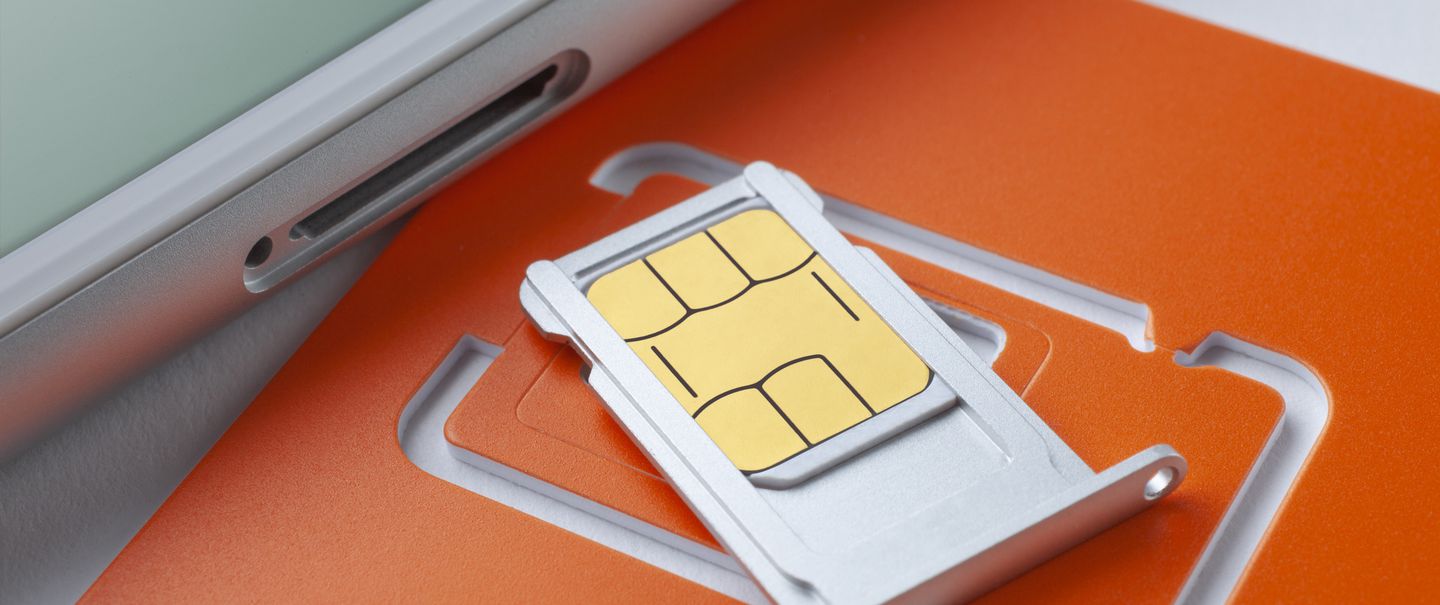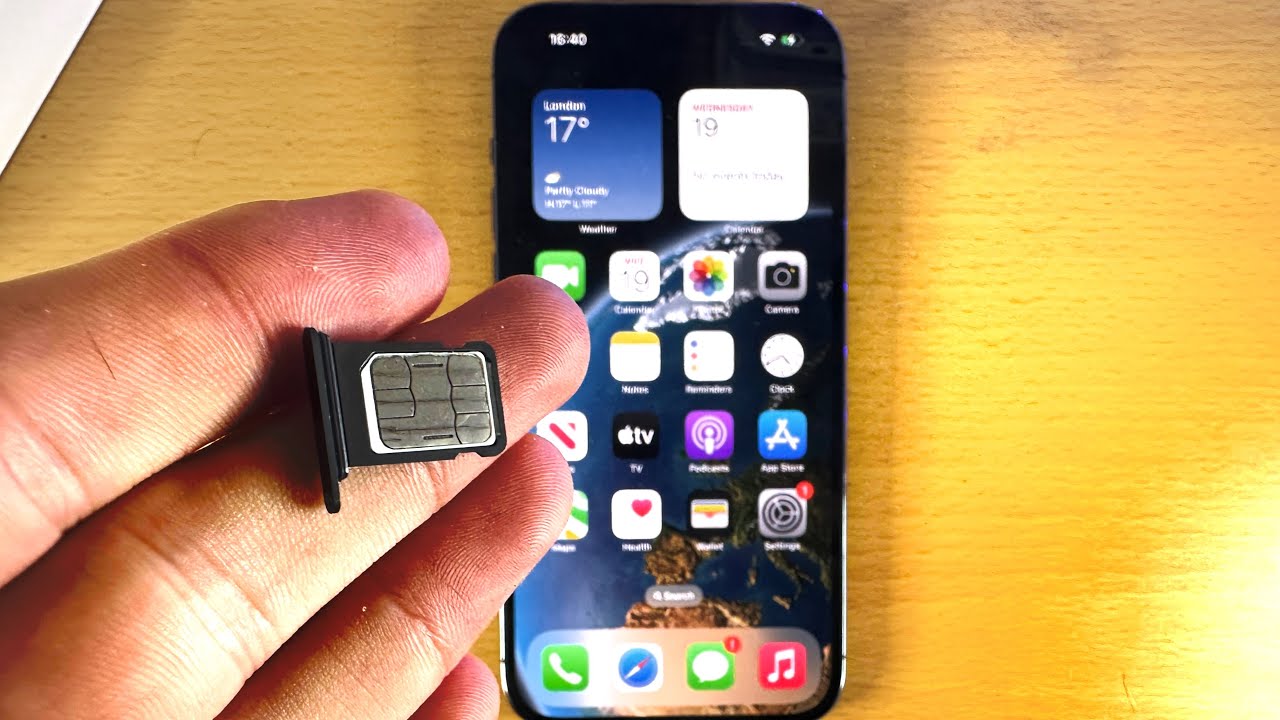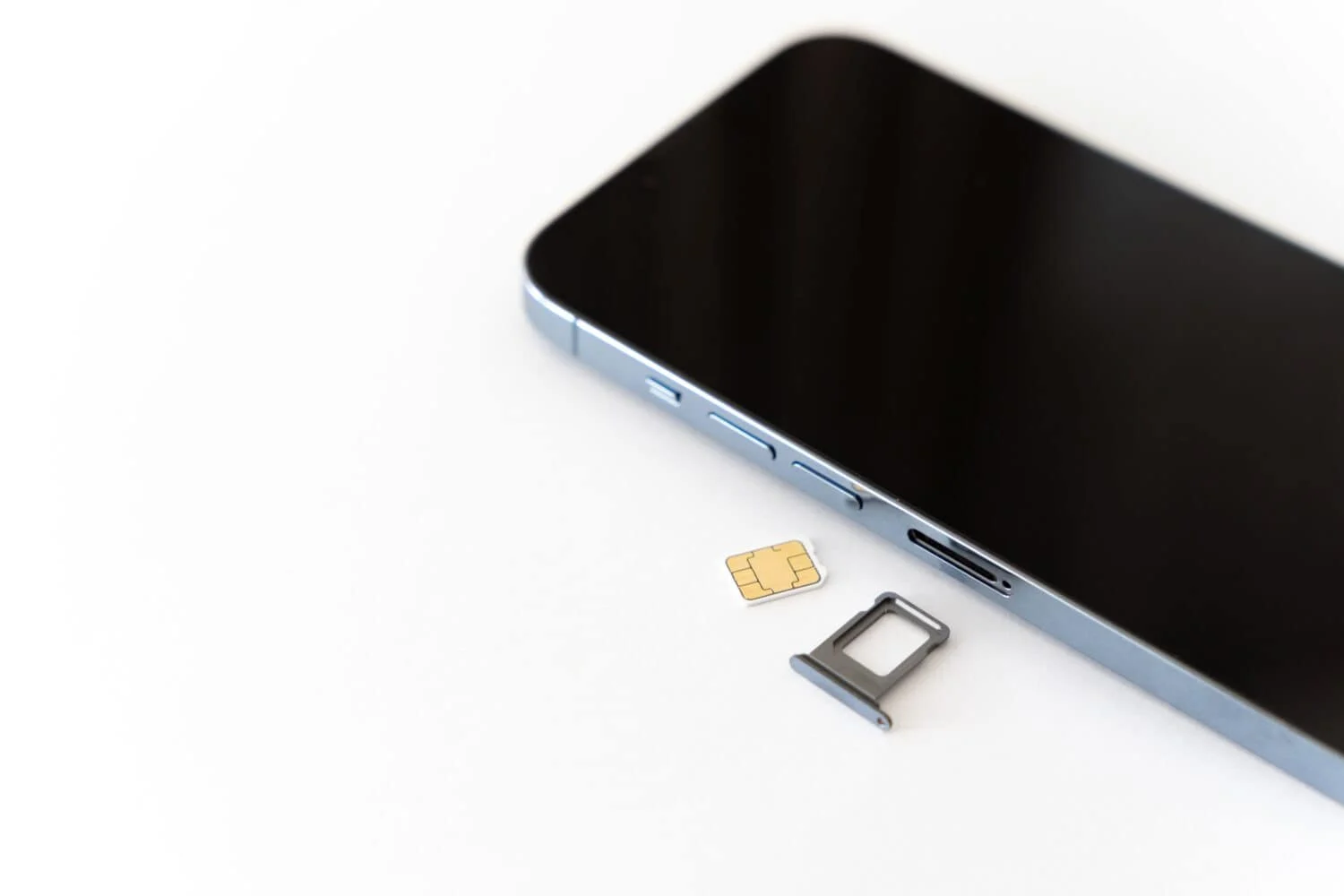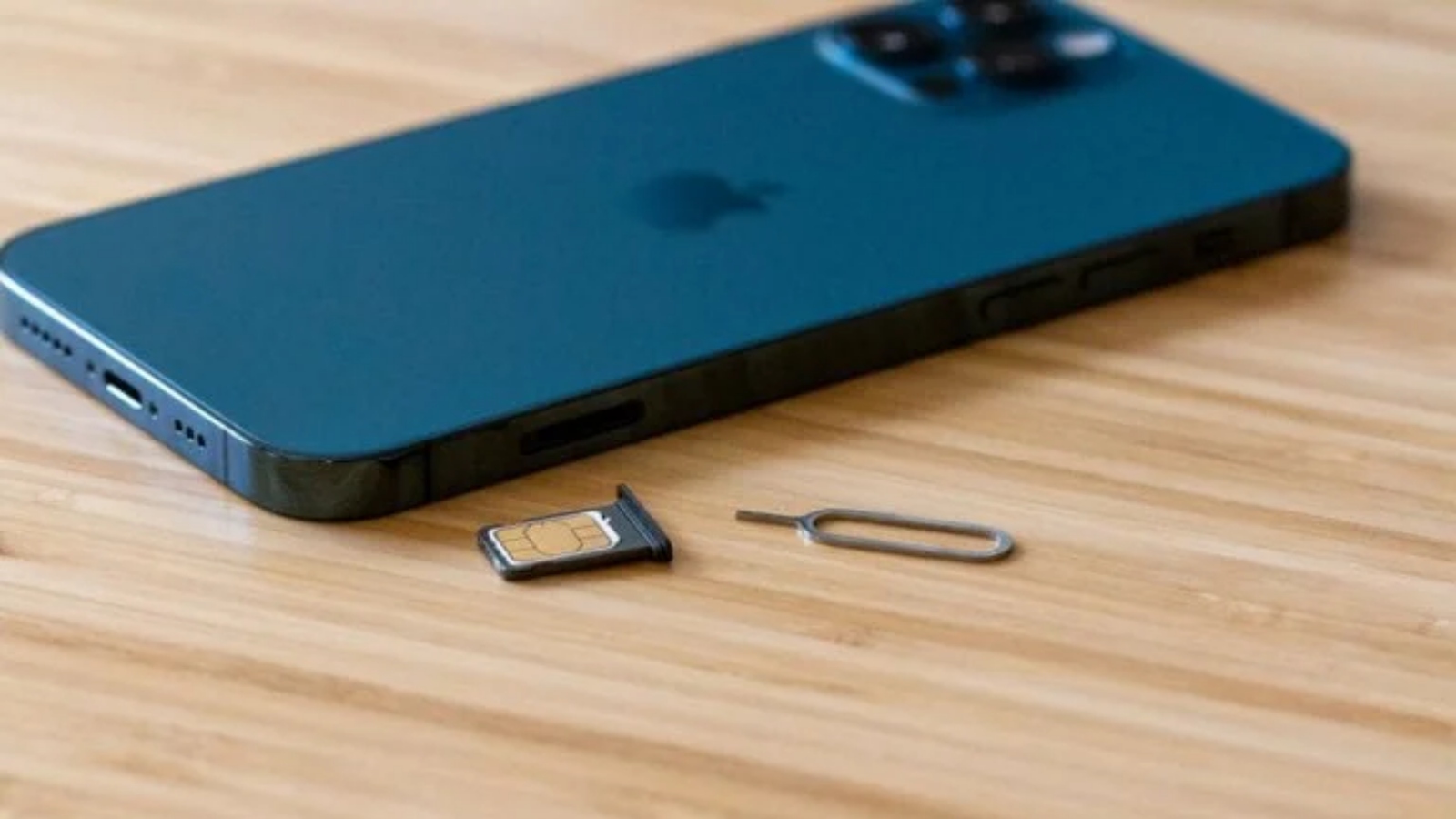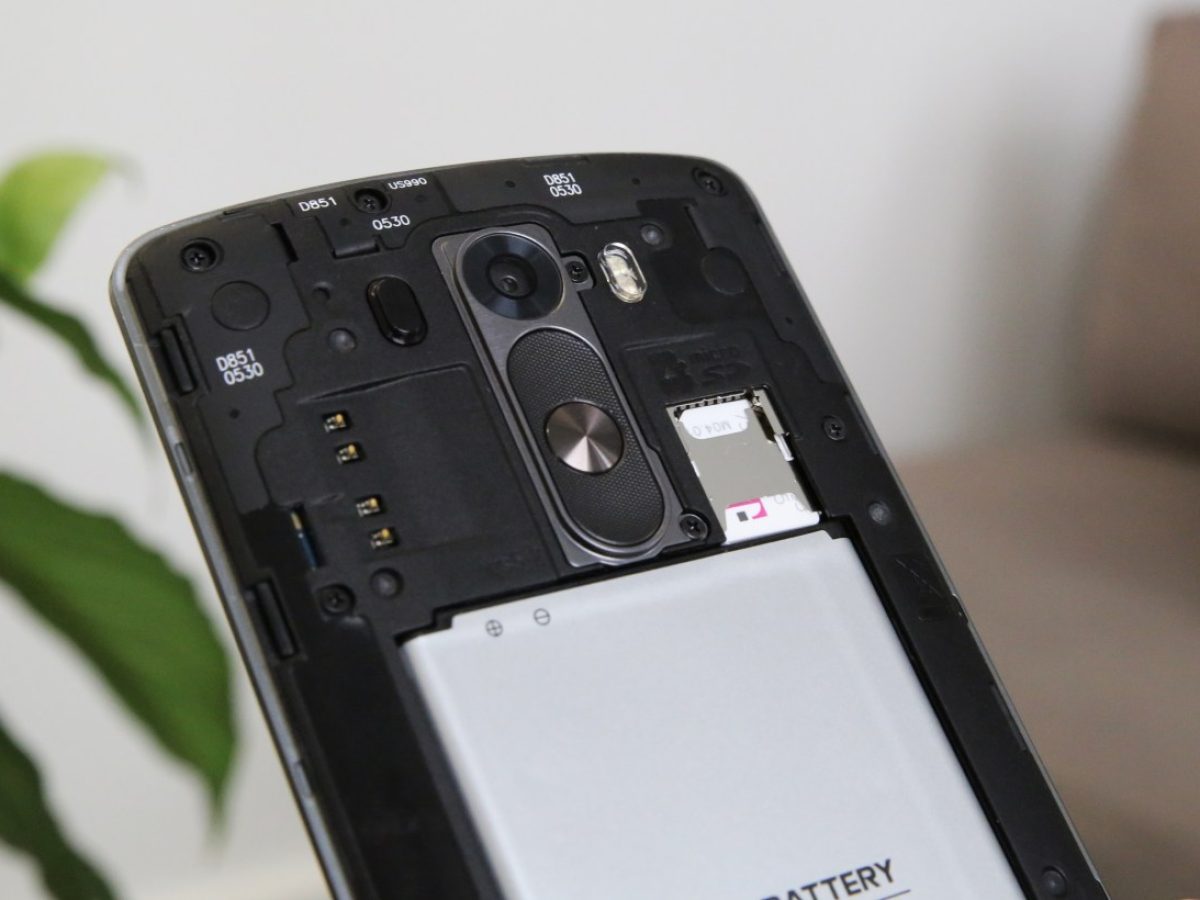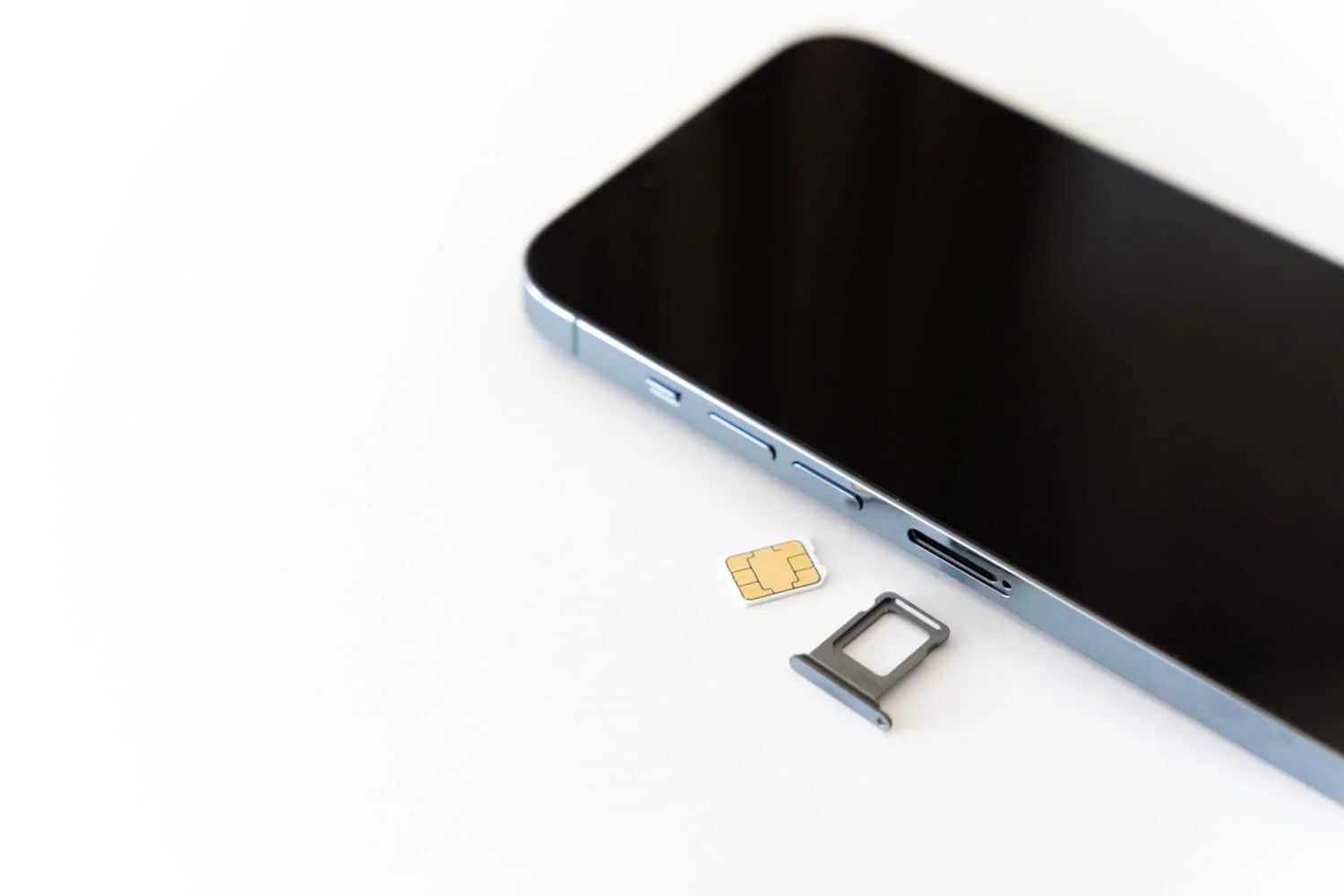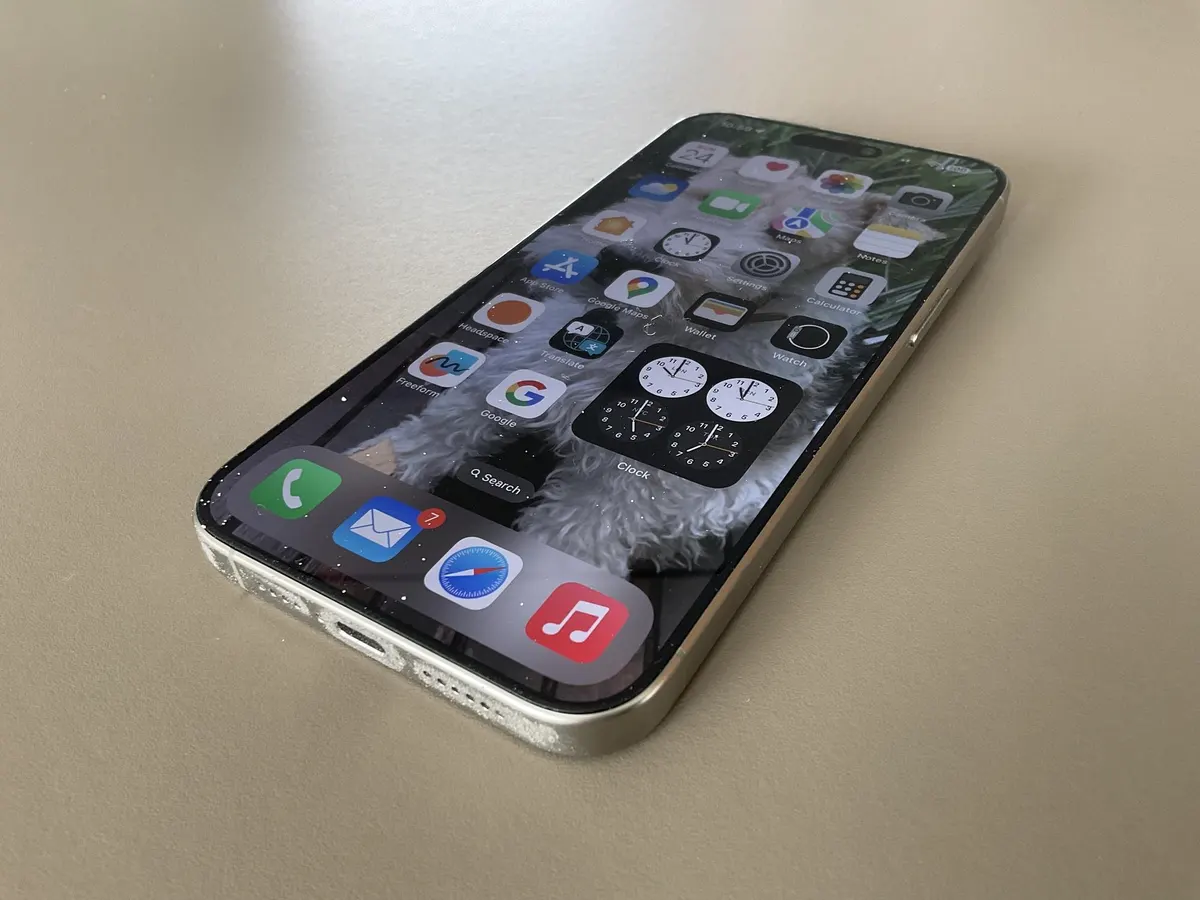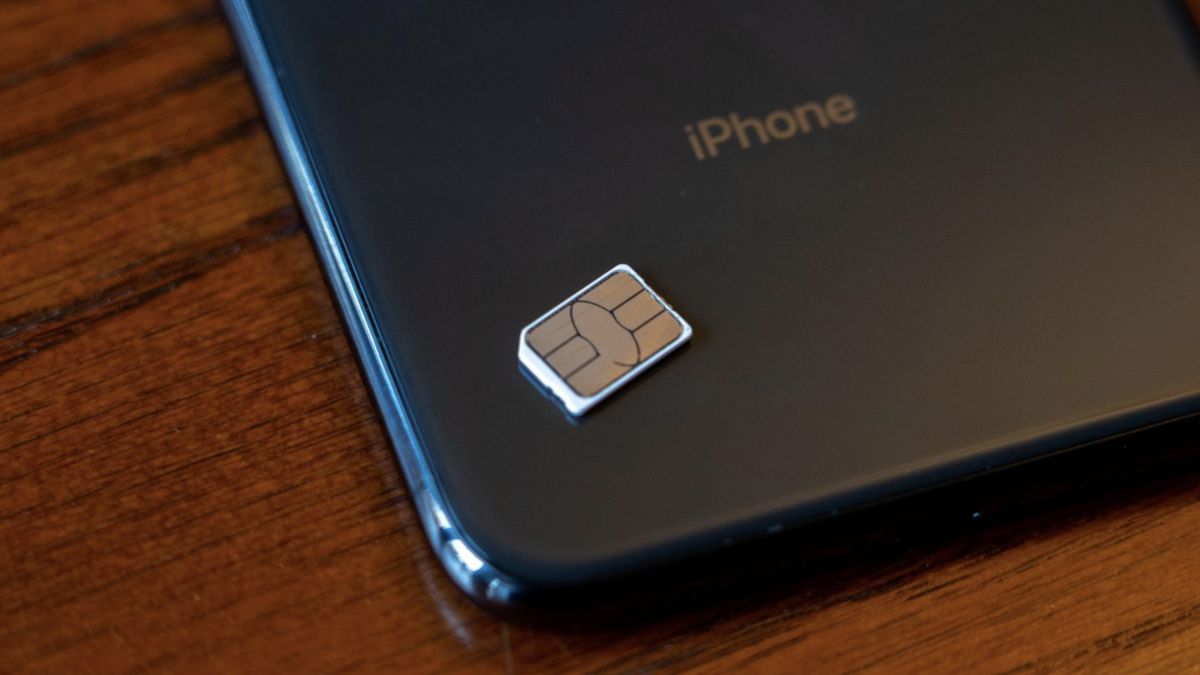Introduction
Encountering the dreaded "No SIM Card" error message on your smartphone can be frustrating and perplexing. In a world where staying connected is paramount, this issue can disrupt your daily routine and leave you feeling disconnected from the digital world. However, fear not, as there are several steps you can take to troubleshoot and resolve this problem. In this comprehensive guide, we will walk you through the essential measures to take when your phone displays the "No SIM Card" notification.
From checking the physical condition of your SIM card to exploring software-related solutions, we will cover a range of potential fixes to address this common issue. Whether you're a tech-savvy individual or someone who is less familiar with the intricacies of mobile devices, this guide is designed to provide clear and actionable steps that anyone can follow.
By following the methods outlined in this guide, you can potentially avoid the inconvenience of visiting a service center and the associated costs. Additionally, resolving the "No SIM Card" error can restore your device to full functionality, allowing you to resume making calls, sending messages, and accessing mobile data without interruption.
Without further ado, let's delve into the step-by-step process of troubleshooting and resolving the "No SIM Card" issue on your smartphone. Whether you're using an iPhone, an Android device, or any other type of mobile phone, the solutions presented here are designed to be universally applicable, empowering you to regain seamless connectivity and communication on your device.
Step 1: Check the SIM Card
The first and most fundamental step in addressing a "No SIM Card" error is to inspect the SIM card itself. This small, crucial component plays a pivotal role in enabling your device to connect to your mobile network. Here's how to go about checking your SIM card:
-
Eject the SIM Card Tray: Most modern smartphones feature a small tray that houses the SIM card. Use the SIM ejector tool or a paperclip to gently push into the pinhole next to the tray, allowing it to pop out. Carefully remove the SIM card from the tray.
-
Examine the SIM Card: Hold the SIM card up to the light and inspect it for any signs of damage. Look for scratches, dents, or discoloration, as these could indicate physical damage that may be preventing the SIM card from being recognized by your device.
-
Clean the SIM Card and Tray: If the SIM card appears dirty or dusty, use a soft, dry cloth to gently wipe the metallic contacts on the back of the card. Similarly, clean the inside of the SIM card tray to ensure there is no debris obstructing the connection.
-
Reinsert the SIM Card: After cleaning and inspecting the SIM card, carefully place it back into the SIM card tray, ensuring it is properly aligned. Gently push the tray back into the device until it clicks into place.
-
Restart Your Phone: Once the SIM card is securely reinserted, restart your phone to see if the "No SIM Card" error persists. A simple reboot can sometimes resolve temporary glitches and re-establish the connection with the SIM card.
By meticulously examining and tending to the condition of your SIM card, you can eliminate potential physical issues that may be causing the "No SIM Card" error. If the problem persists after following these steps, it may be necessary to explore additional troubleshooting measures, which we will address in the subsequent sections of this guide.
Step 2: Restart Your Phone
Restarting your phone is a simple yet effective troubleshooting step that can often resolve a wide range of technical issues, including the "No SIM Card" error. When your device encounters software glitches or temporary connectivity disruptions, a reboot can help reset essential system functions and re-establish the connection with your SIM card. Here's a detailed look at the process of restarting your phone and the potential benefits it can yield:
How to Restart Your Phone
-
Power Off: Begin by pressing and holding the power button on your smartphone. Depending on the model of your device, a menu will appear on the screen, prompting you to power off the phone. Follow the on-screen instructions to turn off the device completely.
-
Wait and Power On: Once the phone has powered down, wait for a few moments before pressing the power button again to turn it back on. As the device boots up, it will undergo a sequence of system checks and reinitialization processes.
-
Check for SIM Card Recognition: After the phone has restarted, observe whether the "No SIM Card" error message persists. If the reboot was successful in addressing the issue, your device should recognize the SIM card and establish a connection to the mobile network.
Benefits of Restarting Your Phone
-
Clearing Temporary Glitches: When your phone encounters temporary software or connectivity issues, a restart can clear these glitches and restore normal functionality. This can include resolving minor conflicts that may be hindering the device's ability to detect the SIM card.
-
System Reinitialization: Restarting your phone initiates a reinitialization process, allowing the device to refresh its system functions and re-establish essential connections, including the recognition of the SIM card.
-
Simple and Non-Invasive: Compared to more complex troubleshooting methods, restarting your phone is a straightforward and non-invasive approach that can be performed by users of all technical levels.
By incorporating the practice of regular restarts into your phone usage habits, you can proactively prevent and address various technical issues, including the "No SIM Card" error. In the event that the problem persists after restarting your phone, further troubleshooting steps will be explored in the subsequent sections of this guide.
Step 3: Update Your Phone's Software
Keeping your phone's software up to date is a crucial aspect of maintaining optimal performance and addressing potential issues, including the "No SIM Card" error. Software updates often contain bug fixes, security enhancements, and improvements to system stability, all of which can contribute to resolving connectivity issues related to the SIM card. Here's a comprehensive look at the significance of updating your phone's software and the steps involved in carrying out this essential maintenance task.
Importance of Software Updates
Software updates serve as a means of delivering critical patches and enhancements to your device's operating system. In the context of addressing the "No SIM Card" error, these updates can introduce optimizations to the device's communication protocols, ensuring seamless interaction with the SIM card and the mobile network. By staying current with software updates, you can benefit from the following:
-
Bug Fixes: Updates often include fixes for known software bugs and glitches that may be affecting the device's ability to recognize the SIM card.
-
Enhanced Compatibility: New software versions may improve compatibility with SIM cards from various carriers and address compatibility issues that could lead to the "No SIM Card" error.
-
Security Patches: In addition to addressing connectivity issues, software updates often include critical security patches that safeguard your device against potential vulnerabilities.
How to Update Your Phone's Software
The process of updating your phone's software may vary slightly depending on the device's operating system, but the general steps are as follows:
-
Check for Updates: Navigate to the "Settings" menu on your phone and locate the "Software Update" or "System Update" option. Tap on this option to initiate a search for available updates.
-
Download and Install: If a software update is available, follow the on-screen prompts to download and install the update. Ensure that your device is connected to a stable Wi-Fi network and has an ample battery charge to complete the update process.
-
Restart Your Phone: After the update is installed, restart your phone to allow the new software version to take effect. This step is crucial for implementing the updates and ensuring that the changes are fully integrated into the device's operating system.
By regularly updating your phone's software, you can proactively address potential software-related causes of the "No SIM Card" error. If the problem persists after updating the software, further troubleshooting steps will be explored in the subsequent sections of this guide.
Step 4: Check for Physical Damage
Physical damage to the SIM card or the SIM card slot can lead to connectivity issues and trigger the "No SIM Card" error on your smartphone. It's essential to carefully examine both the SIM card and the device itself for any signs of damage that may be impeding the proper functioning of the SIM card. Here's a detailed exploration of the steps involved in checking for physical damage and potential indicators to look out for:
-
Inspect the SIM Card: Begin by removing the SIM card from the device and examining it closely. Look for visible signs of damage such as scratches, dents, or discoloration. These physical imperfections can interfere with the SIM card's ability to establish a secure connection with the device's SIM card slot.
-
Examine the SIM Card Slot: After inspecting the SIM card, carefully examine the SIM card slot within the phone. Check for any foreign objects, debris, or misalignments that may be obstructing the proper insertion and recognition of the SIM card. Additionally, look for any bent or damaged pins within the SIM card slot, as these can hinder the electrical connection with the SIM card.
-
Consider Water Damage: If your device has been exposed to moisture or liquid, there is a possibility of water damage affecting the SIM card and the internal components of the phone. Look for indicators of water damage such as corrosion, discoloration, or irregularities on the SIM card and within the SIM card slot.
-
Test with a Different SIM Card: If you have access to another SIM card, consider testing it in your device to determine whether the "No SIM Card" error persists. This can help rule out potential issues with the original SIM card and provide insights into whether the problem is related to the SIM card itself or the device's SIM card slot.
By meticulously assessing the physical condition of both the SIM card and the device, you can identify and address potential sources of physical damage that may be contributing to the "No SIM Card" error. If physical damage is identified as the root cause, it may be necessary to seek professional assistance or explore device-specific troubleshooting methods to rectify the issue.
Step 5: Contact Your Carrier
If you've diligently followed the preceding steps and the "No SIM Card" error persists, reaching out to your mobile carrier is the next logical course of action. Your carrier plays a pivotal role in providing the network connectivity essential for your device to recognize and utilize the SIM card effectively. By engaging with your carrier's customer support or technical assistance team, you can access specialized guidance and troubleshooting tailored to your specific network and subscription.
When contacting your carrier, it's beneficial to have the following information readily available:
- Your account details, including the mobile number and any relevant account PIN or security credentials.
- A clear description of the issue, including when it first occurred and any specific error messages or indicators displayed on your device.
- Details about the steps you've already taken to troubleshoot the problem, such as checking the SIM card, restarting your phone, and examining for physical damage.
Upon connecting with your carrier's support team, you can expect to engage in a collaborative troubleshooting process aimed at diagnosing and resolving the "No SIM Card" error. The support representative may guide you through additional device-specific checks and settings adjustments tailored to your carrier's network configuration.
In some cases, the carrier may remotely initiate diagnostic checks on your device to identify any network-related issues that could be contributing to the problem. Additionally, they may verify the status of your SIM card and account provisioning to ensure that all necessary services are active and properly configured.
If the issue is determined to be network-related, the carrier's technical support team can initiate specific troubleshooting procedures on their end, potentially resolving underlying network connectivity issues that may be affecting your device.
In situations where the problem is attributed to a faulty SIM card or account-related discrepancies, the carrier can facilitate the process of replacing the SIM card or rectifying any account provisioning errors that may be impeding the proper functioning of the SIM card.
By proactively engaging with your carrier's support resources, you can leverage their expertise and resources to address the "No SIM Card" error comprehensively. In the event that the issue is traced back to network-related factors or account provisioning discrepancies, the carrier's intervention can lead to a swift resolution, allowing you to regain seamless connectivity and functionality on your device.
If the "No SIM Card" error persists despite engaging with your carrier, further device-specific diagnostics or professional assistance may be necessary to pinpoint and resolve the underlying cause of the issue.
Step 6: Try a Different SIM Card
If you've reached this step and the "No SIM Card" error continues to plague your device, it's time to explore the option of testing with a different SIM card. This approach serves as a valuable diagnostic method to discern whether the issue is specifically tied to the original SIM card or if it extends to the device's SIM card slot and related hardware. By substituting the existing SIM card with a different one, you can gain valuable insights into the root cause of the connectivity problem and pave the way for targeted troubleshooting.
Here's a systematic approach to implementing this step:
-
Obtain a Different SIM Card: Acquire a functional SIM card from the same mobile carrier or a compatible SIM card from another carrier, if possible. Ensure that the replacement SIM card is in an active and operational state, as this will enable a comprehensive assessment of its compatibility with your device.
-
Power Off Your Device: Prior to inserting the alternative SIM card, power off your device to ensure a safe and controlled transition. This precautionary measure helps prevent any potential disruptions during the SIM card replacement process.
-
Replace the SIM Card: Carefully eject the SIM card tray using the provided tool or a paperclip, and gently remove the original SIM card. Insert the alternative SIM card into the tray, ensuring that it is correctly aligned and securely seated within the designated slot. Once the replacement SIM card is in place, carefully reinsert the tray into the device.
-
Power On and Monitor: Turn on your device and observe its behavior upon recognizing the new SIM card. If the device successfully identifies and establishes a connection with the replacement SIM card, this indicates that the original SIM card may be the source of the "No SIM Card" error.
-
Assess Connectivity: Verify that the device displays the carrier's name or signal bars, indicating a successful connection to the mobile network. Attempt to make a call, send a message, or access mobile data to confirm the functionality of the replacement SIM card.
By conducting this systematic test with a different SIM card, you can gain valuable insights into the nature of the "No SIM Card" error and its underlying causes. If the replacement SIM card functions seamlessly in your device, it suggests that the original SIM card may be faulty or incompatible with your device. Conversely, if the problem persists despite using a different SIM card, it indicates that the issue may be related to the device's SIM card slot, hardware components, or software configurations.
If the test with a different SIM card proves inconclusive or if the "No SIM Card" error persists, additional troubleshooting measures, such as resetting network settings or seeking professional assistance, may be necessary to further isolate and address the underlying cause of the issue.
Step 7: Reset Network Settings
Resetting the network settings on your smartphone can serve as a powerful method to address persistent connectivity issues, including the vexing "No SIM Card" error. This process involves reverting your device's network configurations to their default state, effectively clearing out any potential software glitches or misconfigurations that may be impeding the proper recognition of the SIM card and hindering seamless communication with the mobile network.
Here's a detailed look at the steps involved in resetting the network settings on your device and the potential benefits it can yield:
How to Reset Network Settings
-
Access the Settings Menu: Navigate to the "Settings" app on your smartphone. The location of the network settings may vary depending on the device and operating system, but it is typically found within the "Connections," "Network & Internet," or "Wireless & Networks" section.
-
Locate the Reset Options: Within the network settings menu, look for an option related to "Reset," "Reset Network Settings," or "Reset Wi-Fi, Mobile, and Bluetooth." This option is designed to restore the device's network configurations to their default state.
-
Initiate the Reset: Tap on the "Reset Network Settings" option and confirm your decision when prompted. Depending on the device, you may be required to enter your device's security PIN or pattern to proceed with the reset.
-
Restart Your Device: After the network settings reset is completed, restart your device to allow the changes to take effect. The device will undergo a reboot and initiate the process of reconfiguring the network settings based on the default parameters.
Benefits of Resetting Network Settings
-
Clearing Configuration Errors: Over time, network settings can accumulate configuration errors or inconsistencies that may lead to connectivity issues, including the "No SIM Card" error. Resetting the network settings eradicates these potential obstacles, allowing for a fresh start in establishing connections with the SIM card and the mobile network.
-
Resolving Software Glitches: Software glitches or conflicts within the network configurations can disrupt the device's ability to recognize the SIM card and maintain a stable connection. By resetting the network settings, these glitches can be resolved, potentially alleviating the persistent error message.
-
Optimizing Network Connectivity: Resetting the network settings can optimize the device's ability to establish and maintain network connections, ensuring seamless communication with the SIM card and the mobile network infrastructure.
By incorporating the practice of resetting network settings into your troubleshooting repertoire, you can effectively address software-related factors that may be contributing to the "No SIM Card" error. If the issue persists following the network settings reset, further diagnostic steps or professional assistance may be warranted to delve deeper into the underlying causes of the connectivity problem.
Step 8: Visit a Service Center
If all previous troubleshooting steps have failed to resolve the persistent "No SIM Card" error on your smartphone, seeking assistance from a certified service center can provide a definitive solution to the issue. Service centers staffed by trained technicians offer specialized expertise and diagnostic resources to address complex hardware and software-related problems that may be affecting your device's connectivity.
Visiting a service center offers several distinct advantages in addressing the "No SIM Card" error:
-
Professional Diagnosis: Certified technicians at the service center can conduct a comprehensive diagnosis of your device, utilizing specialized tools and diagnostic software to pinpoint the root cause of the connectivity issue. This in-depth analysis can reveal underlying hardware malfunctions, software conflicts, or intricate network-related discrepancies that may be challenging to identify through standard user-level troubleshooting.
-
Hardware Inspection: Service center technicians have the expertise to thoroughly inspect the physical components of your device, including the SIM card slot, internal connectors, and related hardware elements. This meticulous examination can reveal subtle damage, irregularities, or hardware malfunctions that may be impeding the proper recognition of the SIM card and hindering network connectivity.
-
Software Optimization: In addition to hardware diagnostics, service center professionals can perform advanced software optimizations and troubleshooting procedures to rectify complex software-related causes of the "No SIM Card" error. This can include recalibrating network configurations, addressing firmware inconsistencies, and implementing specialized software updates tailored to your device's specific model and network environment.
-
Warranty and Support: If your device is covered by a manufacturer's warranty or an extended warranty plan, visiting an authorized service center ensures that any necessary repairs or replacements are carried out in accordance with the warranty terms. This can provide peace of mind and financial relief, especially in cases where the connectivity issue is attributed to hardware defects or manufacturing-related discrepancies.
-
Tailored Solutions: Service center technicians can provide personalized solutions based on the unique characteristics of your device and the specific nature of the "No SIM Card" error. This tailored approach ensures that the troubleshooting and repair processes are aligned with your device's individual configuration, network provider, and usage patterns.
By availing yourself of the expertise and resources offered at a certified service center, you can embark on a conclusive path towards resolving the "No SIM Card" error and restoring seamless connectivity on your smartphone. The professional insights and targeted interventions provided by the service center can address complex technical challenges, ultimately enabling you to regain full functionality and connectivity on your device.







